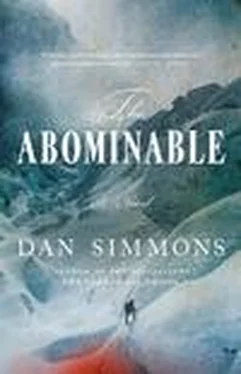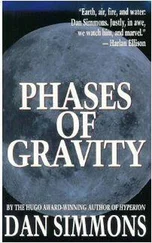I do think this is what he wanted.
I can only hope to God that it was.
Part I
THE CLIMBERS
Chapter 1
The summit of the Matterhorn offers very clear choices: a misstep to the left and you die in Italy; a wrong step to the right and you die in Switzerland.
T he three of us learn about Mallory and Irvine’s disappearance on Mount Everest while we are eating lunch on the summit of the Matterhorn.
It is a perfect day in late June of 1924, and the news lies folded in a three-day-old British newspaper that someone in the kitchen at the small inn at Breuil in Italy has wrapped around our cold beef and horseradish sandwiches on thick fresh bread. I’ve unwittingly carried this still-weightless news—soon to be a heavy stone in each of our chests—to the summit of the Matterhorn in my rucksack, tucked alongside a goatskin of wine, two water bottles, three oranges, 100 feet of climbing rope, and a bulky salami. We do not immediately notice the paper or read the news that will change the day for us. We are too full of the summit and its views.
For six days we have done nothing but climb and re-climb the Matterhorn, always avoiding the summit for reasons known only to the Deacon.
On the first day up from Zermatt we explored the Hornli Ridge—Whymper’s route in 1865—while avoiding the fixed ropes and cables that ran across the mountain’s skin like so many scars. The next day we traversed to do the same on the Zmutt Ridge. On the third day, a long day, we traversed the mountain, again climbing from the Swiss side via the Hornli Ridge, crossing the friable north face just below the summit that the Deacon had forbidden to us, and then descending along the Italian Ridge, at twilight reaching our tents on the high green fields facing south toward Breuil.
I realized after the fifth day that we were following in the footsteps of those who’d made the Matterhorn so famed—the determined artist-climber 25-year-old Edward Whymper and his ad hoc party of three Englishmen: the Reverend Charles Hudson (“the clergyman from the Crimea”); Reverend Hudson’s 19-year-old protégé and novice climber Douglas Hadow; and the confident 18-year-old Lord Francis Douglas (who had just passed at the top of the British Army’s examination list, some 500 marks ahead of the next closest of his 118 competitors), the son of the eighth Marquess of Queensberry and a neophyte climber who’d been coming to the Alps for two years. Along with Whymper’s motley assortment of young British climbers with such wildly different levels of experience and ability were the three guides Whymper had hired: “Old Peter” Taugwalder (only 45, but considered an oldster), “Young Peter” Taugwalder (age 21), and the highly skilled Chamonix Guide, 35-year-old Michel Croz. In truth, they would have needed only Croz as a guide, but Whymper had earlier promised employment to the Taugwalders, and the English climber was always as good as his word, even when it made his climbing party unwieldy and two of the guides essentially redundant.
It was on the Italian Ridge that I realized the Deacon was introducing us to the courage and efforts of Whymper’s friend, competitor, and former climbing partner Jean-Antoine Carrel. The difficult routes we were enjoying had been Carrel’s.
We had our mountain tents—Whymper tents, they were still called, since the famous Golden Age climber had designed them for use on this very mountain—pitched on the grassy fields above the lower glaciers on both sides of the mountain, and we arrived on one side or the other just before dusk every evening, often after dark, there to eat lightly, to talk softly by the small fire, and to sleep soundly for a few hours before rising to climb again.
We climbed the Matterhorn’s Furggen Ridge but bypassed the impressive overhangs near the top. This was not a defeat. For one full day we explored approaches to that never-climbed overhang, but we decided that we had neither the equipment nor the skill to climb it direct. (The overhang would eventually be climbed by Alfredo Perino and Louis Carrel, known as “the little Carrel” in honor of his famous predecessor, and by Giacomo Chiara eighteen years later, in 1942.) Our modesty in not killing ourselves in an impossible—given the equipment and techniques of 1924—attempt on the Furggen Ridge overhang reminded me at the time of how I had first met the 37-year-old Englishman Richard Davis Deacon and the 25-year-old Frenchman Jean-Claude Clairoux at the base of the unclimbed north face of the Eiger—the deadly Eigerwand. But that is a tale for another time.
The essence is that both Deacon—known as “the Deacon” to many of his friends and climbing partners—and Jean-Claude, just become a fully accredited Chamonix Guide, perhaps the most exclusive climbing fraternity in the world, had agreed to take me along for months of their winter, spring, and early summer climbing in the Alps. It was a greater gift than I had ever dreamed of. I’d enjoyed going to Harvard, but my education with the Deacon and Jean-Claude—whom I eventually came to call “J.C.” since he did not seem to mind the nickname—for those months was by far the most demanding and exhilarating educational experience of my life.
At least until the nightmare of Mount Everest. But I get far ahead of my tale.
On our last two days on the Matterhorn we made a partial ascent of the mountain by its treacherous west face, then rappelled down to work out routes and strategies on the truly treacherous north face, one of the Alps’ final and most formidable unsolved problems. (Franz and Toni Schmid will climb it seven years later, after bivouacking one night on the face itself. They will ride their bicycles all the way from Munich to the mountain and, after their surprise ascent via the north face, will ride them home again.) For the three of us, it was a reconnaissance only.
This final day we had teased out routes on the seemingly unassailable “Zmutt Nose” overhanging the right part of the north face, then retreated, traversed to the Italian Ridge, and—when the Deacon nodded his permission to climb the final 100 feet—finally found ourselves here on the narrow summit on a perfect day in late June.
During our week on the Matterhorn we endured and climbed through downpours, sudden snowstorms, sleet, ice that turned rock to verglas, and high winds. On this final day, the weather on the summit is clear, calm, warm, and quiet. The winds are so docile that the Deacon is able to light his pipe after striking only a single match.
The top of the Matterhorn is a narrow ridge about a hundred yards long, if you wish to walk the distance between its lower, slightly broader “Italian summit” and its higher and narrowest point at the “Swiss summit.” In the past nine months or so, the Deacon and Jean-Claude have taught me that all good mountains give you clear choices. The summit of the Matterhorn offers very clear choices: a misstep to the left and you die in Italy; a wrong step to the right and you die in Switzerland.
The Italian side is a sheer rock face falling 4,000 feet to rocks and ridges that would stop a fall about halfway down the face, and the Swiss side falls away to a steep snow slope and rocky ridges hundreds of feet lower than the halfway mark, boulders and ridges that might or might not stop a body’s fall. There is enough snow here on the ridgeline itself for us to leave clear prints of our hobnailed boots.
The Matterhorn’s summit ridge is not quite what excited journalists like to call “a knife-edge ridge.” Our boot prints in the snow along the actual ridge prove this. Had it been a knife-edge ridge, with snow, our boot prints would have been on both sides, since the smart way to traverse a true knife edge is to hobble slowly along like a ruptured duck, one leg on the west side of the narrow summit ridge, one on the east. A slip then will lead to bruised testicles but not—God and fate willing—a 4,000-foot fall.
Читать дальше












